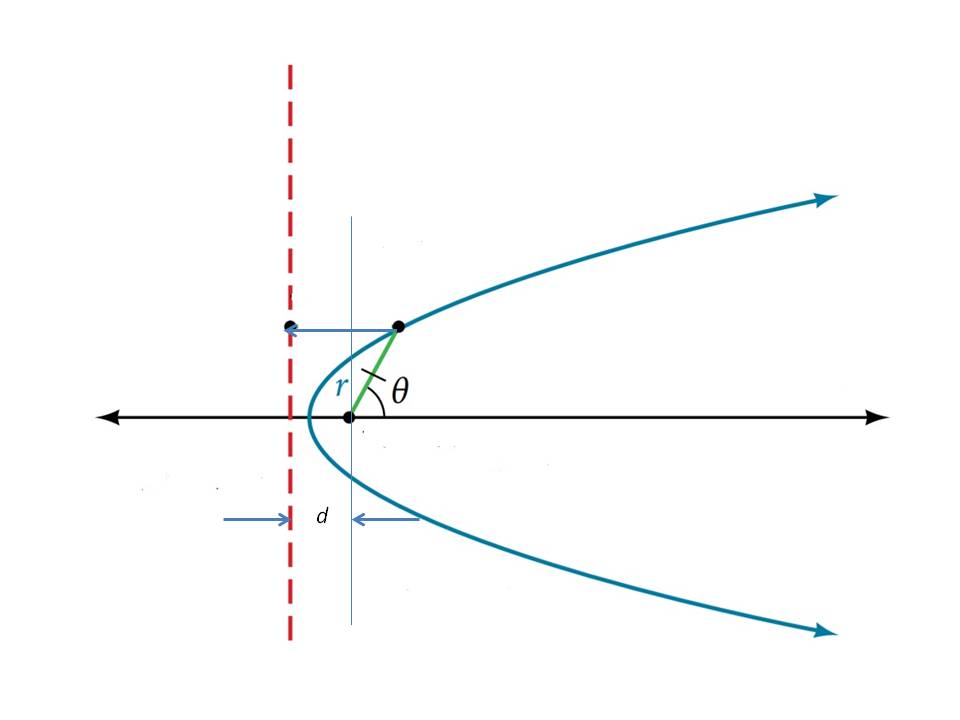How would you show that the polar equation #r=(ed)/(1+ecos(theta))# represents an ellipse if e<1, a parabola if e=1, or a hyperbola if e>1?
#r=(ed)/(1+ecos(theta))#
2 Answers
See below.
Explanation:
We have
then
The conic characterization is done according do the eigenvalues of
thus
Please see below.
Explanation:
We know that a conic section is defined as locus of a point that moves so that ratio, known as
-
in case this ratio is equal to one, it is a parabola,
-
in case this ratio is less than one, it is an ellipse and
-
in case this ratio is greater than one, it is a hyperbola.
Assume that in polar coordinates, focus is at pole and directrix is at a distance of

Now if
and equation of conic section is
or
or
and
Observe that if directrix is to the right of focus, the equation of conic section would have been

